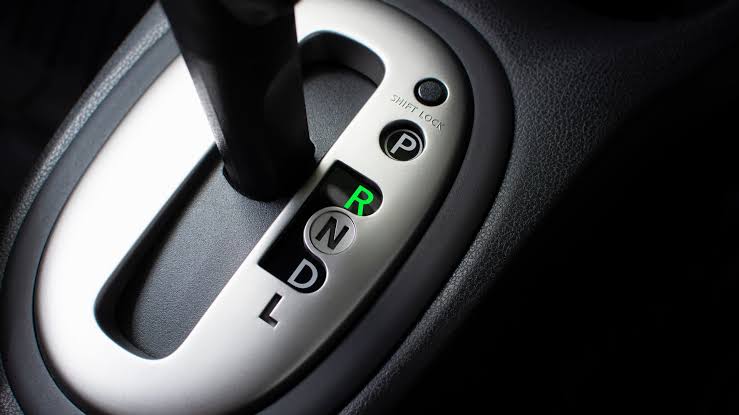Every transmission shop has heard it. "I thought it was drive, not reverse!" Sure they did. The truth is, 95% of modern automatic transmissions contain safety features specifically designed to prevent this exact scenario, because the consequences can be catastrophic.
Your transmission wasn't built to handle the shock of suddenly reversing direction while traveling forward. Period. What actually happens depends entirely on whether you're driving a manual or automatic transmission vehicle, and more importantly, how old your car is.
Modern Automatic Transmissions
Here's the good news for most drivers. If you're behind the wheel of a car built after 1990, chances are excellent that nothing dramatic will happen when you accidentally (or deliberately) shift into reverse while driving forward.
The reverse inhibitor saves the day. This safety device prevents your automatic transmission from engaging reverse gear while the vehicle moves forward at any significant speed. The system works through hydraulic controls in older models and electronic management in newer vehicles. The powertrain control module (PCM) simply ignores your reverse command until you slow down or stop completely.
"My car won't let me mess up!" That's exactly what engineers intended. The inhibitor activates at speeds as low as 5 mph, protecting both you and your transmission from costly damage.
Manual Transmissions
Manual transmission drivers face a much more serious situation. Most manual gearboxes lack sophisticated reverse inhibitors, relying instead on physical lockout mechanisms that require deliberate effort to engage reverse gear.
The synchronizer nightmare begins here. When you force a manual transmission into reverse while driving forward, you're asking the synchronizers to match dramatically different rotational speeds. The synchronizer tries desperately to equalize shaft speeds, generating excessive heat and wearing out components at an alarming rate.
At highway speeds, the physical reverse gear can literally shred itself. The small teeth on the reverse gear get completely destroyed, leaving metal fragments throughout your transmission. Game over.
PRE 1990 Vehicles
Older automatic transmissions present the highest risk scenario. Without reverse inhibitors, these systems will attempt to engage reverse gear regardless of forward speed.
- Engine stalling becomes your best-case scenario. The transmission tries to spin the drive wheels backward while your vehicle maintains forward momentum. This creates an immediate mechanical conflict that typically stalls the engine. Your power steering and power brakes may fail simultaneously, leaving you fighting to control a coasting vehicle.
- Transmission destruction follows quickly. The planetary gears, clutch packs, and bands inside your automatic transmission weren't designed for this abuse. Expect complete transmission failure requiring thousands in repairs.
The Physics Problem Nobody Talks About
"I can stop faster by using reverse!" This dangerous misconception ignores basic physics. Your vehicle carries enormous kinetic energy when traveling at highway speeds. The reverse gear cannot overcome this momentum - it simply creates chaos.
Skidding becomes inevitable. Even if the transmission somehow engages reverse and spins the drive wheels backward, your vehicle won't stop. Instead, you'll likely lose traction entirely as the drive wheels fight against the momentum and the non-driven wheels continue rolling forward.
What Actually Happens in Real World Tests
Engineering tests reveal that shifting to reverse at 60 mph typically produces one of three outcomes:
- Complete system lockup - The transmission seizes, wheels lock, and the vehicle skids uncontrollably
- Gear destruction - Internal components break apart, filling the transmission with metal debris
- Electronic override - Modern safety systems prevent engagement entirely
None of these scenarios help you stop faster or more safely than using your brakes.
Your Emergency Response Plan
If you accidentally shift into reverse while driving, follow these steps immediately:
- Stay calm. Panicking leads to additional mistakes that compound the problem.
- Release the accelerator completely and avoid pressing it again.
- Shift back to neutral if possible, allowing the vehicle to coast safely.
- Apply brakes normally to slow down and pull over safely.
- Check for damage by listening for unusual noises and feeling for vibrations.
"My transmission will protect me, right?" In most cases, yes. Modern automatic transmissions contain multiple safety systems designed to prevent reverse engagement while driving forward. However, these systems aren't foolproof, and manual transmissions offer significantly less protection.
Your best strategy remains simple: use your brakes to stop your vehicle. They're specifically designed, tested, and engineered for this purpose. Your transmission isn't.
Professional diagnosis is essential if you've experienced any reverse engagement while driving. Even if everything seems normal, internal damage may have occurred that could lead to future failure. A qualified transmission shop can identify problems before they become expensive disasters.
Remember: there's no scenario where shifting to reverse while driving forward improves your safety or vehicle performance. The physics simply don't work in your favor.

Comments (0)
Please login to join the discussion
Be the first to comment on this article!
Share your thoughts and start the discussion